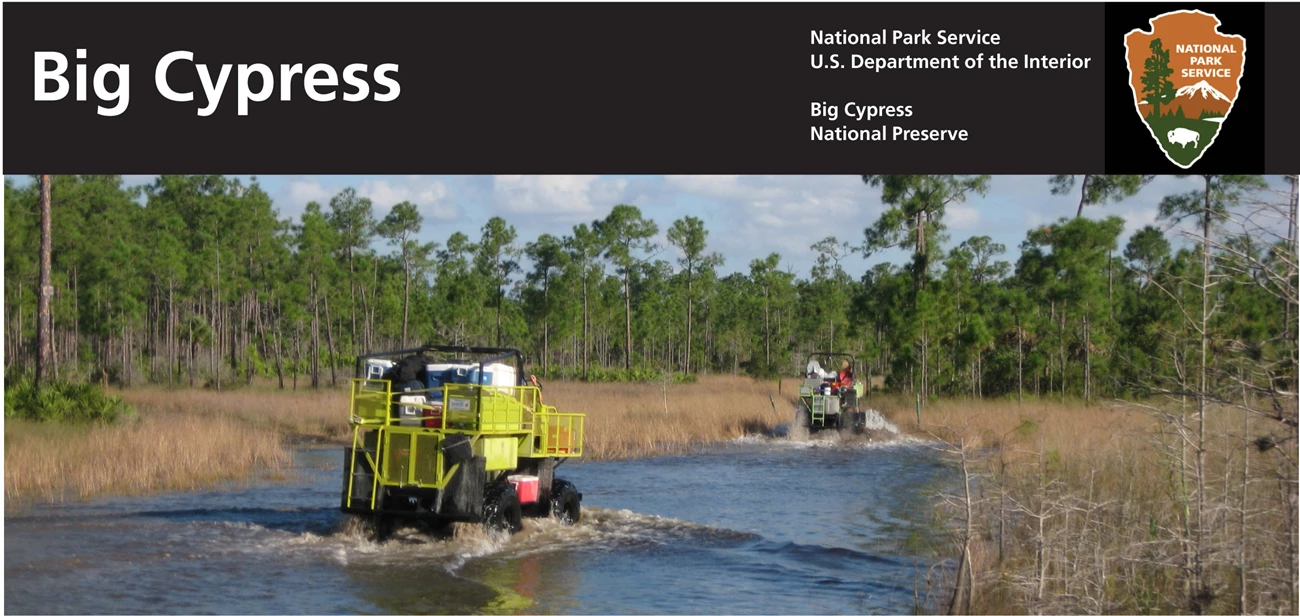|
Click here for a short video that outlines the various activities that Congress directed the National Park Service to allow and manage for within Big Cypress National Preserve. Big Cypress National Preserve is a diverse landscape, where one can see cypress and mangroves, alligators and panthers all in one day! Just like the diversity of the land, the National Park Service manages for a diversity of activities within the national preserve that national parks typically do not allow. In the 1960s, plans for the world's largest Jetport, to be constructed in the heart of the Greater Everglades of south Florida, were unveiled. This project, and the anticipated development that would follow, spurred the incentive to protect the wilds of the vast Big Cypress Swamp. To prevent development of the Jetport, local conservationists, sportsmen, environmentalists, Miccosukees, Seminoles and many others set political and personal differences aside. The efforts of countless individuals and government officials prevailed when, On October 11, 1974, Big Cypress National Preserve was established as the nation's first national preserve. The concept of a Preserve was born from an exercise in compromise. Everyone saw the importance of protecting the swamp, but many did not want this region merely added to nearby Everglades National Park that was created in the 1940s. Many felt that national parks were managed in a restrictive manner and access to the swamp would be lost. The resulting compromise created a new land management concept - a national preserve. An area that would be protected, but would also allow for specific activities that were described by Congress within the legislation that created the Preserve. BIG CYPRESS NATIONAL PRESERVE'S ENABLING LEGISLATION ALLOWS FOR THE MANAGED USE OF THE FOLLOWING ACTIVITIES 
Traditional and Customary Uses Allowed Within Big Cypress Hunting 
Off Road Vehicle Use Permits and vehicle inspections are required to explore the Preserve's network of off-road vehicle trails. For more information, visit the off-road vehicle office at the Oasis Visitor Center or contact them at 239-695-1205. Traditional Use and Occupancy by the Miccosukee and Seminole Tribes 
Oil and Gas Exploration Private Land Ownership Cattle Grazing Big Cypress National Preserve allows for a wide range of activities that many National Park Service units do not manage for. Whether it be hunting, hiking, fishing, canoeing, "ORVing," or just plain relaxing, Big Cypress National Preserve offers to the public diverse opportunities to explore this diverse landscape. Imagine what the area may have become if the proposed airport was completed and a comprimise for protection was not found. Other national preserves managed by the National Park Service: * Aniakchak National Monument and Preserve, Alaska |
Last updated: August 1, 2025

